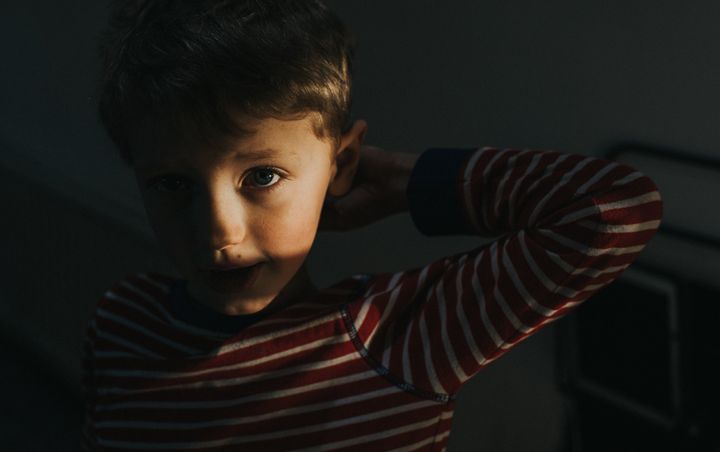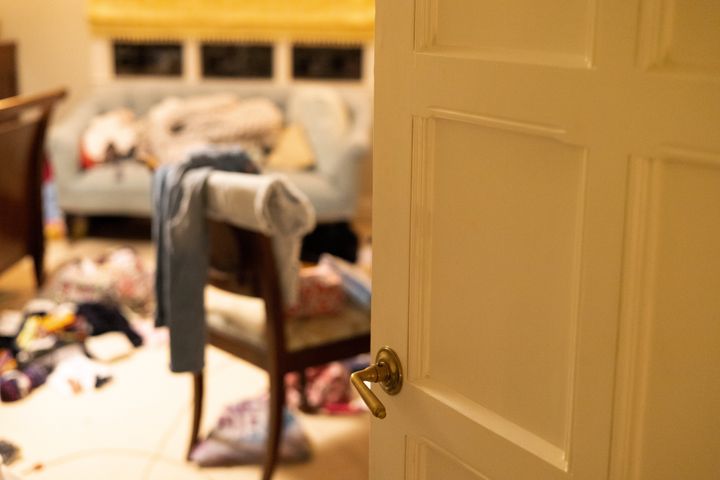
Kids have incredibly active imaginations – so it’s no wonder then that at night, when they can’t see properly, their little minds go into overdrive. Cue: the nightmares and night terrors.
They might spot something in their room – a pile of clothes, for example – that they think is a monster. Or they see something move across the room and it spooks them (only for you to realise, all bleary-eyed thanks to the 2am wake-up, it was just their own reflection in the mirror).
According to interior experts at Happy Beds, there are a few furnishings in your child’s room that could be contributing to night terrors. Here’s what parents need to know.
1. Mirror, mirror off the wall
Firstly, move any mirrors away from their bed, as having a mirror in their eye line can increase the chance of them thinking they’ve caught a glimpse of something scary.
If there are mirrors in your child’s room, position them so they aren’t visible from the bed to allow their imagination to rest easy while trying to drift off.
2. Keep mess to a minimum
Any clutter in your child’s bedroom has the potential to cause a fright at night – so clear it away before they settle down for the evening.
As Happy Beds’ interior experts say: “A pile of clothes may not look too scary during the day but can transform into something much more sinister under the veil of darkness.”

3. Stick to short curtains
Curtains are often a source of fear in children’s rooms, according to the experts, with tall curtains in particular allowing little imaginations to run wild – conjuring up images of someone, or something, hiding behind them.
Switching to shorter, half-size curtains can help. Or better yet, remove the curtain fear altogether by replacing them with blinds (just remember to keep any cords out of reach of little hands).
4. Rethink any wall art
Superheroes are very popular among kids, but action-themed wallpaper, décor, or artwork could also be contributing to their night terrors. Not ideal.
Experts recommend avoiding anything with violent or hostile imagery showing weapons, fight scenes or aggressive action, such as superheroes fighting, ninjas or sharks.
Instead, opt for calm artwork, family photos, or children’s own framed drawings.
How to help children who are experiencing nightmares and terrors
Dr Katherine Hall, a psychologist in sleep from Somnus Therapy, has a few tricks up her sleeve for helping to reduce the chance of nighttime wake-ups.
Brainstorm “good dreams” before they drift off to sleep
“A way to ward off negative thoughts and dreams is to discuss happy thoughts before your child falls asleep,” she explains.
“As part of your sleep routine and schedule, take a few moments to discuss the types of good dreams your child wishes to have. For example, if you have a fun holiday or event in the near future, have your child imagine what it will be like. What will you pack or wear? What kind of activities will you do? Who will be there?
“Encourage your child to daydream about these positive thoughts. Just avoid generating too much excitement right before bed, which may cause your little one to become hyper-aroused.”
If your child is fearful of something in particular, discuss it in more detail
“The more you avoid your fears, the bigger and scarier they become,” says Dr Hall.
Instead of completely shielding your child from their greatest fears, she recommends gradually exposing them to whatever is triggering their nightmares. Over time, these triggers will then have less control over your child’s mood, thoughts and dreams.
“For example, if your child is having nightmares about clowns, the dolls in their bedroom, or the neighbour’s dog, you need to show them that these things aren’t a threat,” she explains.
“Try discussing their specific fears for 10 to 15 minutes a day. The more comfortable your child becomes with these ideas and images, the less scary they’ll be and the less likely to cause disturbing nightmares.”
Be mindful of what they’re eating and drinking before bed
Cheese, spicy foods, sweets, chocolate, pizza, pasta and milk have all been linked to a bigger likelihood of a nightmare, says Dr Hall. So take note of what your child ate the night before a particularly bad bout of nightmares.
“Swap the above-mentioned foods with healthy, low-sugar alternatives like yoghurt, fresh fruit, granola or toast,” she advises.
“A light snack will also prevent stomach discomfort, including gas or acid reflux. Have your child eat their snack about 60 minutes before bed to allow plenty of time for digestion.”
Perform relaxing activities before bed
Winding down before bed is super important – and Dr Hall recommends allocating about an hour to do this properly.
“Turn off the TV and all other digital devices at least 60 minutes before bed (if not, longer),” she advises. “The blue light from electronic devices prevents your child’s brain from releasing the sleep hormone melatonin, which induces relaxation and calm.
“Turning off electronics will also prevent your little one from seeing a frightening image or idea too close to bedtime.”
She says you can help your child calm their mind and body by performing breathing or mindfulness exercises.
Reach for the night light
Lots of kids are scared of the dark. At a young age, imaginations run wild, and shapes and shadows in dark rooms can transform in their minds.
A night light can help them see around their room properly (meaning there’s less chance of them feeling scared of anything lurking in the shadows). Experts recommend a warm-toned night light to ensure children don’t feel scared throughout the night.